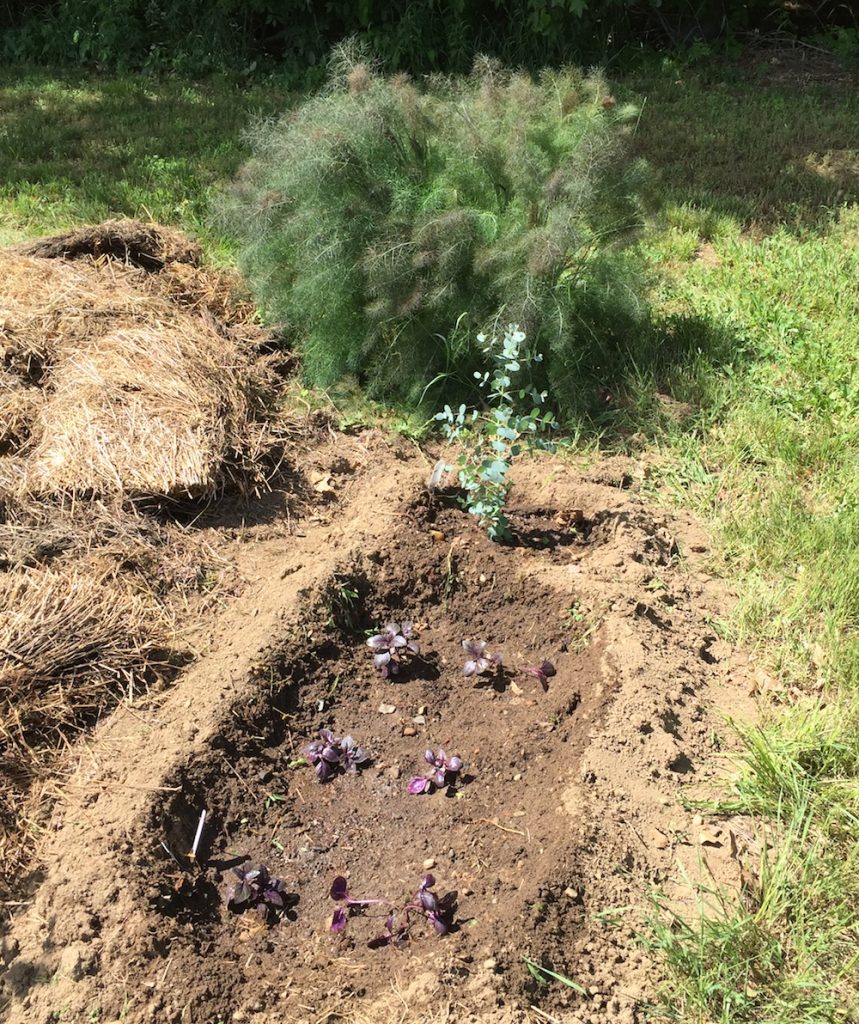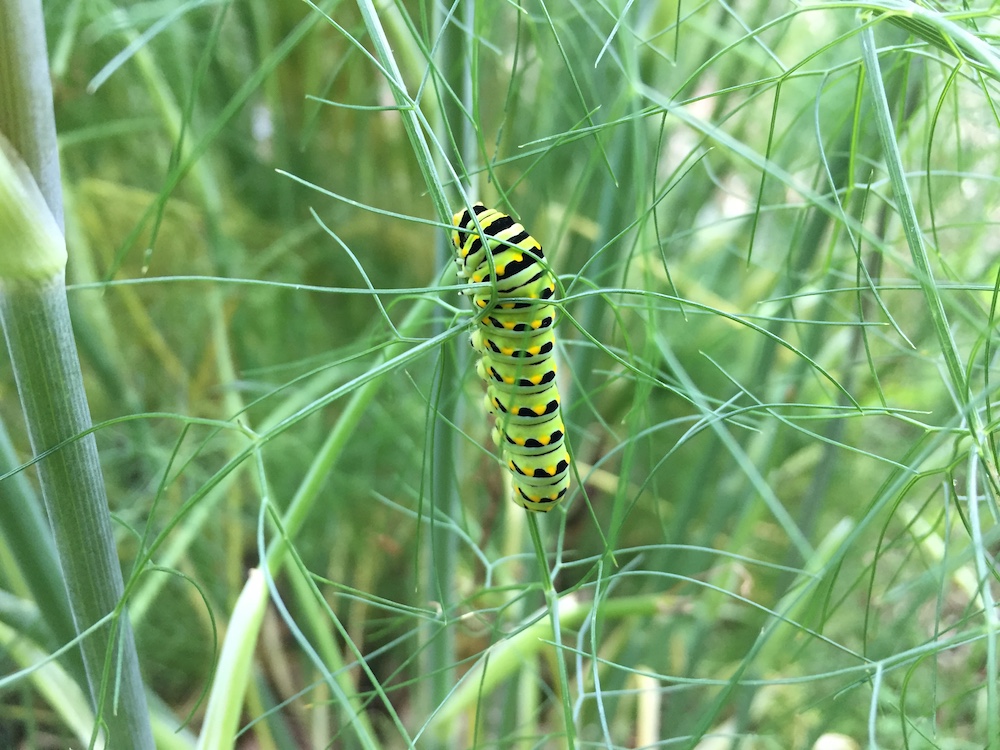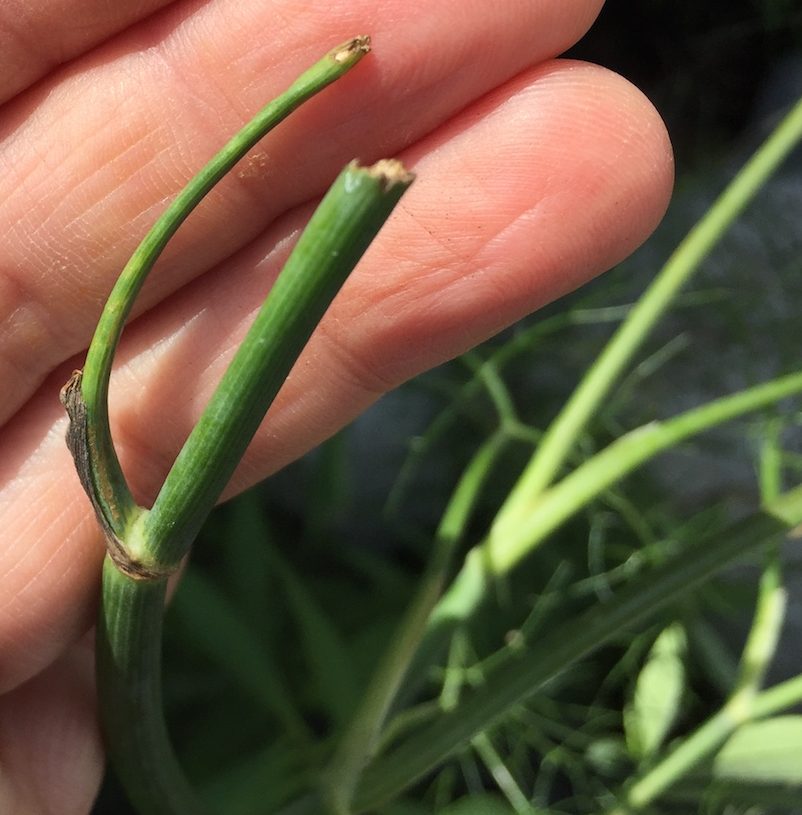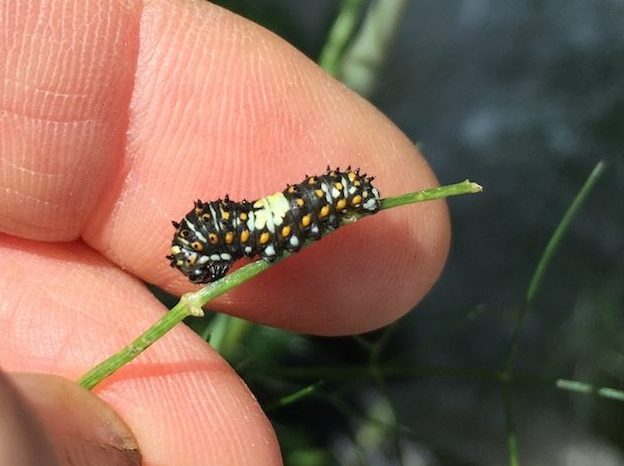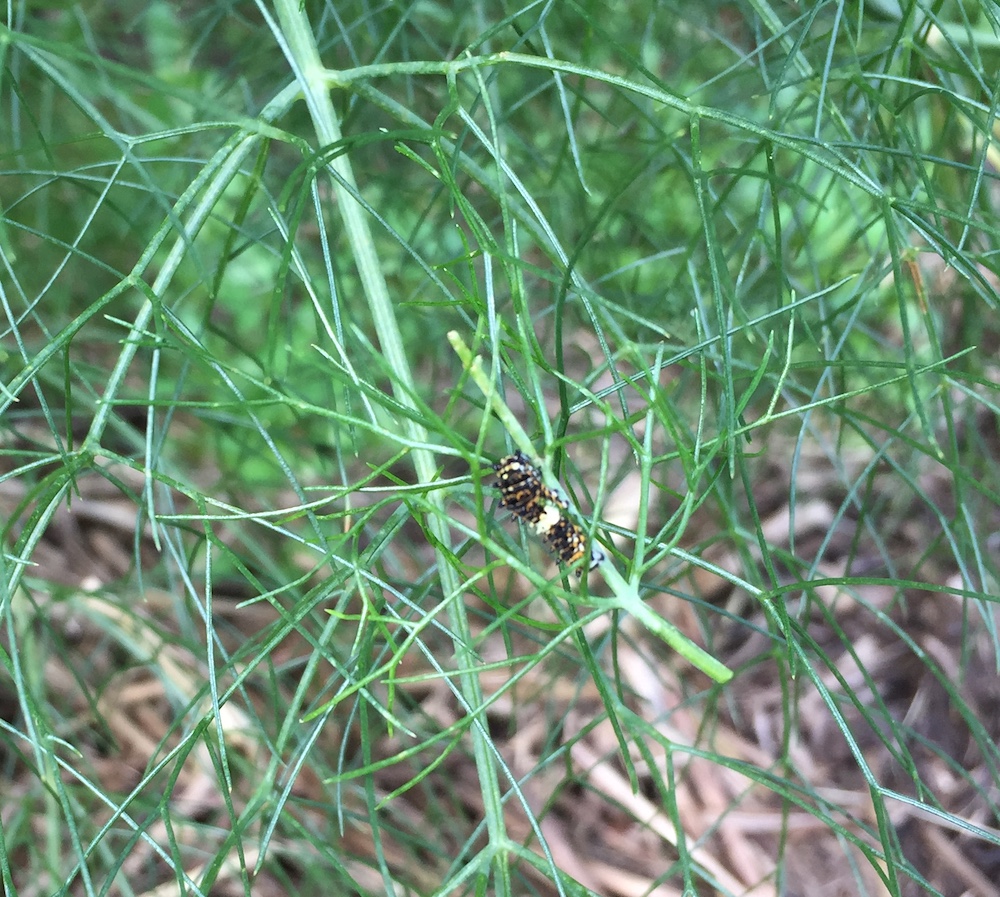About four or five years ago, I planted bronze fennel in the dye and fiber plant garden at Bramble Hill Farm. I planted a small six pack, thinking that it would be a one-season plant, in the same way that one might buy marigolds or basil. But no!
As a dye plant, bronze fennel makes a light but bright yellow-green with alum mordant on wool, which can be shifted further toward green with a copper afterbath. Maybe it doesn’t sound that exciting, but if you like chartreuse, you might understand the appeal.
As a garden plant, it is utterly fantastic. It is a perennial, it grows really tall, and it changes color and texture in a lovely way over the season. It smells amazing, tastes amazing, and every part is edible. The flowers, though not showy, attract a lot of pollinators.
Early in the season, the foliage is dark and bronze-green (hence the name). It’s dense and feathery, and can tolerate a lot of neglect. For example, if you don’t get around to weeding until the beginning of June, it is undaunted and continues to make a statement:
After you get around to weeding and filling in the annuals, it makes a gorgeous color contrast with other shades of green or purple:
Alas, the purple basil didn’t thrive (i.e., survive) this year, but the eucalyptus is doing well.
One of the most amazing things about bronze fennel is that it is a host plant for swallowtail butterflies. The downside is that the caterpillars eat the leaves. The upside is that there is so much plant material, you really don’t care. You just want the caterpillars to be happy and turn into butterflies.
Here are some photos from June 20 that show older caterpillars:
The first and the last image, I’m pretty sure, are the same caterpillar from different viewpoints. So, let’s say there were two caterpillars on the mature bronze fennel on June 20th. I had noticed them in past summers when they were about this size, but hadn’t thought much about what happened before or after this stage of growth. Honestly, I didn’t even look further into what type of caterpillar it was. They came and went, no harm done.
At some point this summer, I decided I ought to hold a dye plant sale. So, rather than just weeding out the bronze fennel seedlings that had sprouted up around the parent plants, I dug a few of them up and put them into pots. For many days, the potted-up babies sat in the shade next to the garden, but eventually I got all the necessary factors lined up to put the plants in the back of the car and bring them home. Well, we didn’t go straight home from Bramble Hill Farm, because once you are out and about doing errands with the car, you may as well multi-task. So, they were still in the back of the car when I pulled into the parking lot of Stop and Shop. I looked in the rear-view mirror, and could clearly see that one of the plants had been chomped.
Well, it was obviously caterpillars. But these were plants I was hoping to sell, and I didn’t want them to be eaten! Who is eating my fennel? Here’s what I saw when I looked more closely:
This wasn’t the only one. There were three of these little creatures.
Even without knowing exactly what they were, I was sure this wasn’t your average “pest”. I decided to move them back to the mature fennel plants at the garden so they could keep growing. It is surprisingly hard to get my phone aka camera to focus on small insects, so all my photos of the resettlement project came out blurry except this one:
OK, this one is blurry too. But the point is that I moved the teensy caterpillars onto different plants, and hoped they would continued to grow and develop.
There are a lot of websites that have information about swallowtail butterflies’ lifecycles. I found the images by Bob Moul on this site very clear. This website from the University of Florida also has clear images and information. This Mass Audubon site has information specific to Massachusetts.
It turns out that there are a lot of different types of swallowtail, and even different types of black swallowtail. I think that the teensy caterpillars I noticed in the Stop and Shop parking lot are the first instar of eastern black swallowtail caterpillars. That’s as specific as I could get at this point.
Up here in the Northeast, from what I can gather, there is only time for two generations of butterflies to grow and mature in a summer season. After that, the next generation has to overwinter and emerge from its chrysalis in the spring. I may be oversimplifying this, so I intend to do more reading and observations on the topic. Some folks protect the chrysalises over winter, but I am hoping they will be OK in situ.
9/2/18 Edited to add: This blog post on Our Habitat Garden has very clear photos of the entire lifecycle of Eastern Black Swallowtails. Upon re-reading it, I think the caterpillars I found were an early instar, but not the first. The authors also explain how and why you might need to overwinter a chrysalis in the northeast.
As of August 30th, I haven’t seen any chrysalises yet. If I do see a chrysalis at Bramble Hill, I will let you know!

